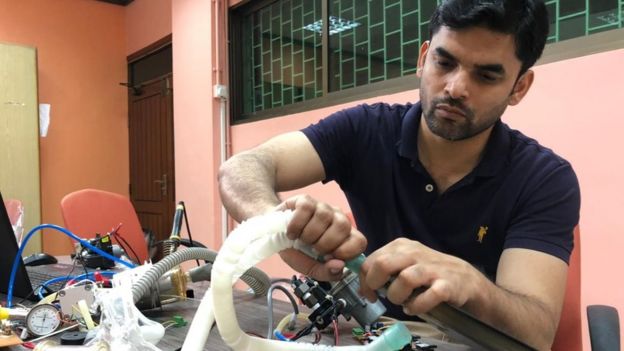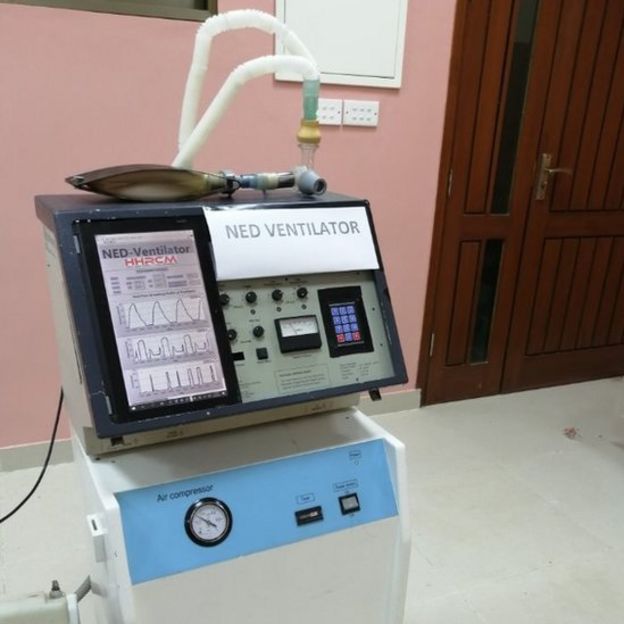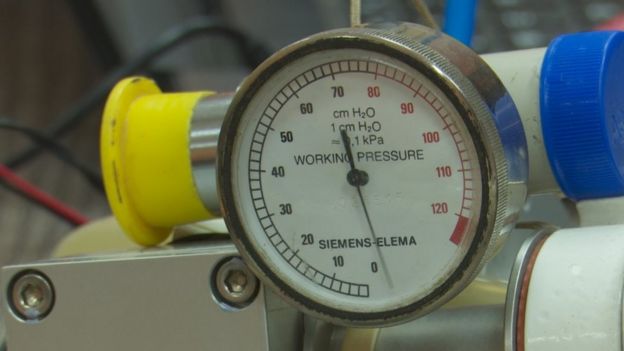 |
| Pakistan-made ventilator: 'Its quality is world class and the price will be lower' |
According to the World Health Organization, the number of corona patients in Pakistan could reach millions within the next few weeks if precautions are not taken. Doctors in all major cities of Pakistan have already said that the number of Corona patients has increased due to the easing of lockdown.
Doctors have warned that if the number of corona patients in Pakistan continues to rise rapidly, the country's medical system will not be able to bear the burden. He says that doctors, hospital beds and medical facilities in Pakistan are very inadequate.
When Code 19 patients are more numerous, they will also have more people who need intensive care. The medical equipment that Pakistanis will need to save the lives of such patients includes ventilators.
There were just over 2,000 ventilators in the country's public and private hospitals, according to figures from Pakistan's National Disaster Management Authority. Pakistan plans to import another 3,000 ventilators in the wake of the Corona epidemic.
However, there are currently two difficulties in importing ventilators from abroad. Ventilators are also in great demand in developed countries, so their production and delivery are slow. And then their value has multiplied. Already a ventilator used to reach Pakistan for more than Rs 3.5 million.
The most appropriate solution in this situation was for Pakistan to make its own ventilator.
This has never happened before today, but it has happened now. Local engineers have developed a few samples of ventilators that are being tested.
Javed Saleem Qureshi, chairman of the Pakistan Engineering Council, told the BBC: Applications received.
A few of them were selected, of which two ventilators have so far been approved for clinical trials by the drug regulator DRAP.
The ventilators being tested by the Engineering Council, DRAP and medical experts include a ventilator developed by Dr. Riaz-ud-Din and his colleagues.
The ventilator has been successfully passed through two phases of initial testing by experts, while a third phase will be held earlier this week in which the ventilator will undergo an endurance test to see how many hours it will run continuously. Can The next step will be clinical trials.
Could this ventilator be an alternative to imported ventilator?

Dr. Riaz-ud-Din is an Assistant Professor in the Department of Electrical Engineering at the NED University of Engineering and Technology, Karachi and is also the Director of the Hepatics, Human Robotics and Condition Monitoring Laboratory at the University. The ventilator was developed in the same laboratory.
Speaking to the BBC, Dr Riaz-ud-Din said that the ventilator he had developed was world-class and was equipped with all the methods that are available in any imported ventilator. These are called modes in technical language.
All modes can be used. It is of the same quality as any imported ventilator but will cost less.
According to Dr. Riaz, it can be used in the intensive care unit for patients of any age or weight.
The university's vice-chancellor, Surosh Hashmat Lodhi, told the BBC that the ventilator developed by his colleagues was working in seven modes, while only six modes were needed at the moment.
For which patients can this ventilator be used?
A ventilator is basically an artificial respiratory system that helps people with respiratory diseases or other ailments who have difficulty breathing to breathe. It is used in two basic ways, inviso and non-inviso.
In the invasive procedure, a tube is delivered to the patient's lungs, which is connected to the ventilator by a budding circuit.
The non-invasive procedure involves applying a breathing mask to the patient's face to help them breathe.
The ventilator developed by Dr. Riaz-ud-Din and his colleagues Ali Jamshed, Mohammad Ahmed and Obaid Zafar can be used in both these types of patients and can be operated in both pressure control or volume control modes.
Code 19 which is a respiratory disease and for which there is no cure yet, more critically ill patients can be placed on a ventilator to keep them alive as long as their immune system is free of the virus. Does not defeat This way the patient's life can be saved.
How much cheaper will this ventilator be than imported?

Pakistan always imports ventilators or other such electro-medical devices.
According to Dr. Riaz, under normal circumstances, importing a good quality ventilator costs Rs. 30-35 lakh. However, the cost of their ventilator will be eight to ten times less.
He said that since the ventilator is a life-saving device, the quality of the parts used in it cannot be compromised.
"This is a very important and delicate device and it has to be used to save human lives, so you can't take any risk in terms of its quality."
In the current situation, when the demand and price of ventilators in the global market has increased manifold, the price of ventilators manufactured by NED University will be further reduced.
Dr. Riaz-ud-Din said that his ventilator design is such that it can be used even after Corona's condition.
How quickly can these ventilators be manufactured locally?
According to Dr. Riaz-ud-Din, the initial design and design process was difficult and long, but he worked day and night to make it in less than a month, while the next step will be easier.
"By assigning a task to a specific industry, its production time can be greatly reduced and we can produce it on a large scale in less time."
University Vice-Chancellor Surosh Hashmat Lodhi told the BBC that experts from the Pakistan Engineering Council were examining it, after which the ventilator would be available for clinical trials.
"After these trials, it will be duly licensed and then it will be available for mass production at the industrial level." Large-scale manufacturing can be made possible by giving it to an industry for which we have one or two clients.
He said how many ventilators can be manufactured in a month will depend on the capacity of the industry.
What were the difficulties in making the ventilator?

By the time Dr. Riaz-ud-Din and his team designed the ventilator, it was locked down, meaning most industries were closed. According to Dr. Riaz, initially he had difficulty in obtaining spare parts.
However, he said that the Pakistan Engineering Council was also cooperating with him and assured that "you can prepare a concept, later the parts can be called from close friends to ensure procurement." And can be made locally in Pakistan.
Why ventilator could not be made in Pakistan first?
The efforts of Dr. Riaz and other emerging engineers like him show that Pakistan has the potential to manufacture such devices locally. So why has this never happened?
This can also be gauged from the fact that there is no formal body in Pakistan that can set standards for electromedical devices and approve them after inspection.
Dr Riaz-ud-Din said Pakistan needed to "change the mindset that whenever we need something and it is not available locally, it will be imported."
He hopes that his efforts to develop a ventilator during the Corona virus situation will help change that thinking in the future.



No comments:
Post a Comment